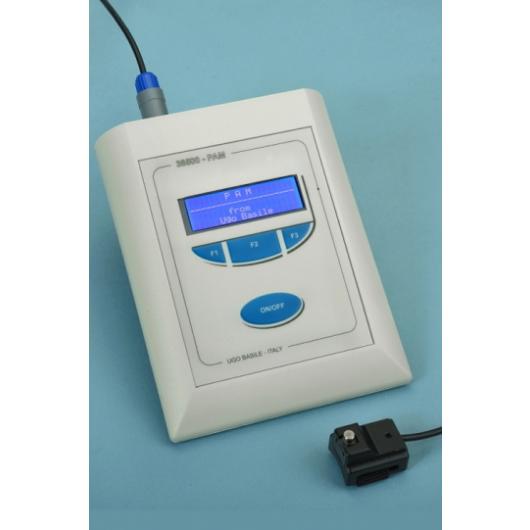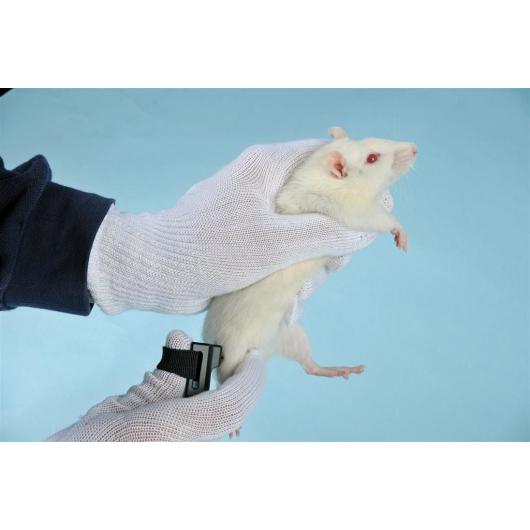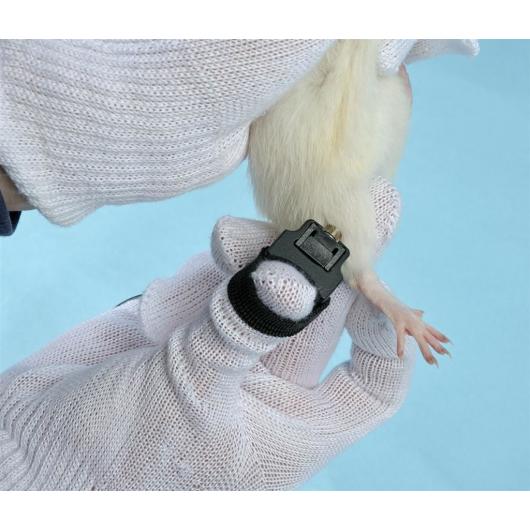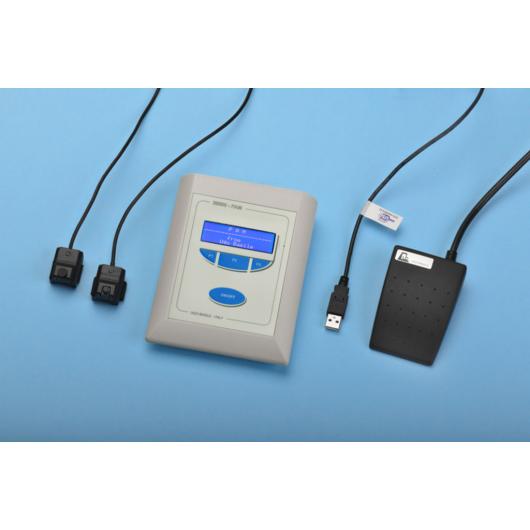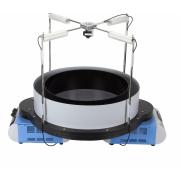




PAM Pressure Application Measurement (for joint pain)
Features
- The force is applied directly to the joint
- Specifically designed for arthritis research
- Paw pressure transducer is an optional
Benefits
- Direct measurent of evoked pain
- The applicators are shaped for rodents knee and ankle
- PAM can also be used as a hand-held Randall-Selitto device
Applications
Arthritis is associated with chronic, debilitating pain in the joints. Current metrics of arthritic pain in animal models are indirect, by scoring the level of motor activity or the animal weight distribution (Barton et al. 2007); while correlating well with the level of joint pain, their metric is a composite picture of complex pain responses, and provides little direct information about local stimulation and locally-evoked responses.
The quantification of localized joint hypersensitivity is not common in animal experiments; in this sense the PAM device represents a step forward toward multifactorial measurement of pain-related behavior in animal research; the PAM is the first instrument designed specifically to apply force to the joint and automatically detect the animal response.
- Critical and sub-critical load-induced knee injuries promote long term pain and impaired locomotion in mice S Ishihara, C Blaker, R Miller, E Clarke, C Little… - Osteoarthritis and Cartilage, 2018 (Mice, male C57BL/6)
- Visualization of Peripheral Neuron Sensitization in a Surgical Mouse Model of Osteoarthritis by In Vivo Calcium Imaging RE Miller, YS Kim, PB Tran, S Ishihara, X Dong… - Arthritis & Rheumatology
- Chemogenetic inhibition of pain neurons in a mouse model of osteoarthritis RE Miller, S Ishihara, B Bhattacharyya, A Delaney… - Arthritis & Rheumatology, 2017
- DEET potentiates the development and persistence of anticholinesterase dependent chronic pain signs in a rat model of Gulf War Illness pain LK Flunker, TJ Nutter, RD Johnson, BY Cooper - Toxicology and Applied …, 2017
- Characterization of the nociceptive effect of carrageenan: Masseter vs Gastrocnemius A Bagüés, M Martín‐Fontelles, J Esteban‐Hernández… - Muscle & Nerve, 2016
- Efficacy and safety of adult human bone marrow-derived, cultured, pooled, allogeneic mesenchymal stromal cells (Stempeucel®): preclinical and clinical trial in … PK Gupta, A Chullikana, M Rengasamy, N Shetty… - Arthritis Research & …, 2016
- T.J. Nutter et alia: “A Delayed Chronic Pain Like Condition with Decreased KV Channel Activity in a Rat Model of Gulf War Illness Pain Syndrome” NeuroToxicology 51: 67-69, 2015
- D. Amorim et alia: “Amitriptyline reverses hyperalgesia and improves associated mood-like disorders in a model of experimental monoarthritis” Behav. Brain Res 265: 12-21, 2014
- S. Mohammadi et alia: “α9-Nicotinic Acetylcholine Receptors Contribute to the Maintenance of Chronic Mechanical Hyperalgesia, but not Thermal or Mechanical Allodynia” Molecular Pain 10(64): 1-9, 2014
- B. Cooper: “Synergistic Actions of Pyridostigmine Bromide and Insecticides on Muscle and Vascular Nociceptors” DTIC Document, Jan 2014
- T. Schwagarus et alia: “A New Method for Measuring CFA-induced Mechanical Hyperalgesia in the Rat” Evotec 2012
Method Paper
- N. J. Barton et alia: “A novel behavioural technique for measuring hypersensitivity in a rat model of joint pain” Journal of Neuroscience Methods 163: 67-75, 20
Acknowledgements:
The PAM device was invented and validated in the University of Edinburgh by the team of Prof. Daniel McQueen, Susan Bond and colleagues and Dr. Harry Brash, who built the first prototypes.

